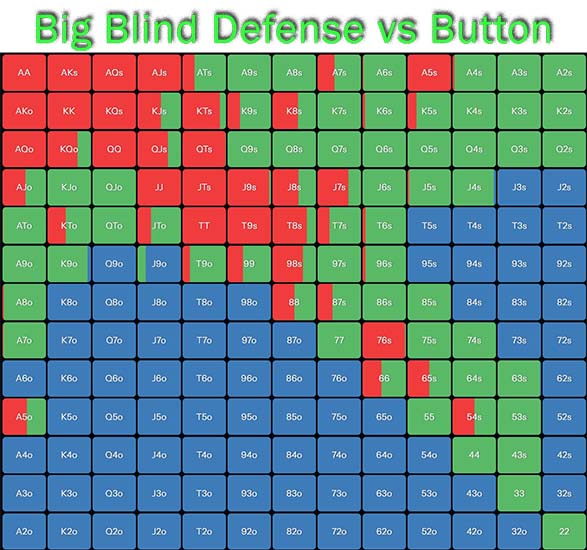Online 6-Max cash games present a unique set of challenges and opportunities. The accelerated pace means players see more hands per hour, requiring quicker and more precise decision-making. Additionally, the average skill level online tends to be higher, as players can easily play multiple tables simultaneously, sharpening their skills faster than their live counterparts.
The objective of this blog is to guide you through making essential GTO adjustments specific to the online 6-Max environment. We’ll bridge the gap between theoretical concepts and practical application, helping you adapt your game to thrive in this demanding setting. Whether you’re an experienced player looking to refine your poker strategy or a newcomer eager to understand the intricacies of GTO play, this guide will provide you with the insights needed to enhance your performance and profitability at the virtual felt.
The Online 6-Max Landscape

Online 6-Max cash games differ significantly from their live counterparts, primarily due to the faster pace and higher volume of hands. In an online poker setting, hands are dealt much quicker, and players often engage in multitabling, where they play multiple tables simultaneously. This environment demands faster decision-making and a more refined strategy to stay ahead of the competition.
Additionally, the ability to play more hands per hour allows players to gain experience and improve their skills at a much faster rate. This means that, on average, online players are more adept at recognizing patterns and exploiting weaknesses, making the games tougher and more competitive.
Importance of GTO in Online Settings
Given the heightened skill level and faster pace, adopting a GTO poker approach becomes even more crucial in online 6-Max games. GTO strategy aims to create a balanced and unexploitable play style, making it difficult for opponents to consistently profit from your decisions. By adhering to GTO principles, you ensure that your strategy is robust against a wide range of opponents, from recreational players to seasoned pros.
In online games, where player pools are large and ever-changing, it is essential to have a solid foundation in GTO strategy. This approach not only minimizes your own mistakes but also capitalizes on the errors of others. By focusing on ranges and probabilities rather than specific hands, GTO provides a framework that can be adapted to various situations, ensuring long-term profitability.
Challenges and Opportunities
While the competitive nature of online 6-Max games presents challenges, it also offers numerous opportunities for growth and profit. The higher skill level of opponents can push you to refine your strategy and deepen your understanding of the game. Moreover, the ability to play multiple tables means you can increase your hourly win rate, provided you maintain a high level of focus and decision-making accuracy.
Additionally, the wealth of data available in online games, through tracking software and hand histories, allows for in-depth analysis and continuous improvement. By reviewing your play and that of your opponents, you can identify leaks in your strategy and make informed adjustments.
In summary, the online 6-Max landscape is fast-paced and competitive, requiring a solid grasp of GTO principles to succeed. By understanding the characteristics of online play and the importance of a balanced, unexploitable strategy, you can navigate this environment effectively and capitalize on the opportunities it presents.
GTO Opening Ranges
In online 6-Max cash games, preflop strategy is paramount to setting up successful postflop play. Adapting your opening ranges to the online environment involves understanding dynamics around poker positions and the impact of the rake.
Positional Awareness
Early Position (EP): When playing from early position, it’s crucial to open with a tighter range. This helps you avoid difficult postflop situations when out of position against multiple opponents.
Middle Position (MP): From middle position, you can start to widen your range slightly, incorporating more suited connectors and medium pairs.
Late Position (CO and BTN): Here, you can open with a broader range, including suited connectors, lower pairs, and more speculative hands, leveraging your positional edge.
3-Betting Strategies
Understanding the nuances of 3-betting is crucial for maintaining a competitive edge. Two primary approaches to 3-betting, with polarized or merged ranges, offer distinct advantages depending on the table dynamics and your opponent’s tendencies. By mastering these strategies and adjusting for positional considerations, you can effectively apply pressure and extract maximum value from your opponents.
Polarized vs. Merged Ranges
Polarized Range: This approach involves 3-betting with both very strong hands (like AA, KK, and AK) and speculative hands that serve as bluffs (such as suited connectors and low suited aces). The aim is to keep opponents guessing about your hand strength, making it difficult for them to play against you.
Merged Range: In a merged range, you 3-bet with a wider array of strong hands and fewer bluffs. This strategy is effective against opponents who frequently call 3-bets, allowing you to play more hands with good postflop potential.

Positional Adjustments:
In Position (IP): When you have the positional advantage, you can widen your 3-betting range. The information gained from acting last postflop provides a significant edge, allowing you to apply pressure and extract value more effectively.
Out of Position (OOP): When out of position, a more conservative approach is warranted. Your 3-betting range should be tighter, focusing on hands that can stand up to postflop aggression.
Defending Against Raises
Effective defense against raises, particularly from the blinds, is a critical aspect of a sound preflop strategy. Balancing between calling and 3-betting helps maintain an unexploitable game.
Big Blind Defense:

Calling: The big blind already has a significant investment in the pot, allowing for a wider calling range.
3-Betting: Incorporate a mix of strong hands and speculative bluffs in your 3-bet range. This puts pressure on the initial raiser and keeps them from exploiting a straightforward calling strategy.
Small Blind Strategy:
Playing from the small blind requires a balanced strategy that includes a mix of calling, 3-betting, and folding, tailored to the dynamics of the hand and your opponent’s tendencies. Calling is viable with hands that have good postflop playability, such as suited connectors, medium pairs, and suited broadway cards, especially against looser openers, while tighter ranges should be adopted against more conservative opponents. A strong 3-betting range should focus on premium hands like AA, KK, and AK, as well as selective bluffs with blockers like suited Ax or Kx, applying pressure and denying equity effectively. Folding remains the optimal choice for hands with low postflop potential, such as weak offsuit connectors or low unsuited high cards, to avoid costly situations out of position. This balanced approach ensures flexibility and maximizes profitability despite the positional disadvantage.
Impact of Rake
Rake significantly impacts the profitability of your poker ranges. In online games, the rake is often substantial, necessitating tighter ranges to maintain profitability. Adjusting to tighter opening ranges helps mitigate the effects of rake, ensuring that your preflop strategy remains profitable.
Postflop Play Adjustments
Equity Realization
Postflop play requires a keen understanding of outs in poker and equity realization. This involves assessing your hand’s potential against the range of hands your opponent might hold, as well as the texture of the board.
Evaluating Hand Equity
Flop: The flop provides the first real opportunity to evaluate your hand’s equity. Consider both your immediate hand strength and potential to improve on later streets. Hands like strong top pairs, overpairs, and solid draws can be played aggressively to maximize value and apply pressure.
Turn and River: As the board develops, continually reassess your hand’s equity. The turn and river cards can significantly alter the strength of your hand and your opponent’s range. Semi-bluffing on the turn with draws or weaker made hands can leverage your equity to force folds from better hands or set up profitable river bluffs.
Strategic Use of Semi-Bluffs: Semi-bluffing is a powerful tool in GTO strategy. It allows you to bet hands that have the potential to improve, such as flush draws, straight draws, and overcards. This prevents your opponent from exploiting your betting patterns.
Balanced Betting
Maintaining a balanced betting strategy is crucial for preventing opponents from exploiting your tendencies. This involves mixing your betting actions with both strong hands and bluffs, ensuring your opponents cannot easily determine your hand strength.
Continuation Betting
Your continuation betting (c-betting) strategy should include a wide range with a mix of strong hands, draws, and occasional pure bluffs. This prevents opponents from simply folding to your c-bets when they have weaker holdings.
Board Texture: Adjust your c-betting frequency based on the board texture. On dry boards (e.g., K-7-2 rainbow), you can c-bet more frequently as these boards are less likely to hit your opponent’s range. On wet boards (e.g., 8-7-6 with two suits), c-bet selectively, as these boards connect well with many hands your opponents might call with preflop.

Incorporating Check Raises
For Value and Bluffs: Check raising is an effective strategy to balance your postflop play. Use it both with strong hands (like sets and two pairs) and bluffs (such as weak draws or missed hands) to create an unpredictable and theoretically sound strategy.
Spotting Opportunities: Look for opportunities to check-raise on boards that favor your perceived range or where your opponent’s betting range is likely to be wide.
Bringing It All Together
Understanding GTO adjustments for online 6-max cash games requires a deep understanding of both theoretical principles and practical applications. The online environment’s fast pace and heightened competition necessitate a robust strategy that priorities theoretically optimal play.
The path to mastering online 6-max cash games is one of continuous learning and adaptation. By integrating GTO principles with practical, situational adjustments, you can navigate the complexities of online poker and consistently enhance your performance. Remember, each session is an opportunity to refine your strategy, improve your decision-making, and ultimately, increase your profitability at the virtual felt. Keep studying, practicing, and adjusting to stay ahead in the competitive landscape.





